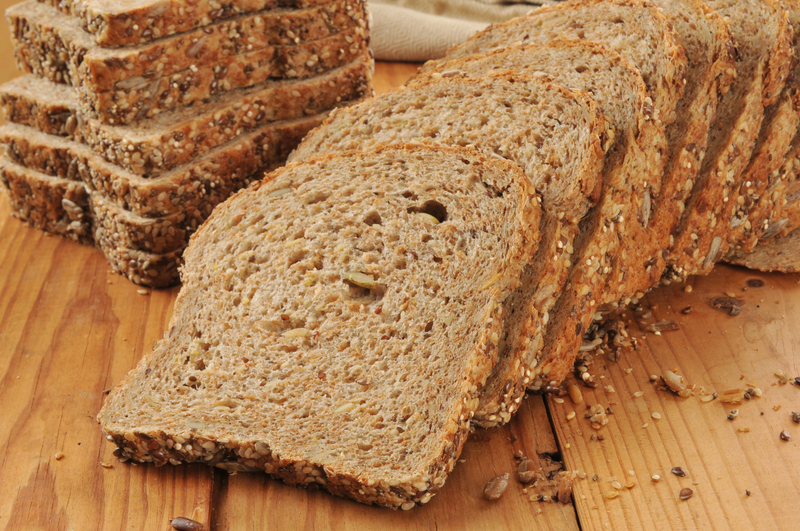Pro tips to restore and maintain your curtains perfectly
Posted on 04/10/2025
Pro Tips to Restore and Maintain Your Curtains Perfectly
Keeping your curtains in pristine condition not only elevates the beauty of your living space but also enhances their longevity. Curtains, much like any other home decor item, require regular attention and care. In this comprehensive guide, you'll discover expert techniques to restore and maintain your curtains perfectly, ensuring they remain as attractive and fresh as the day you first hung them. Read on for the best DIY practices and maintenance know-how for all types of window curtains!
Why Regular Curtain Restoration and Maintenance Matters
Before delving into curtain restoration tips, it's important to understand the benefits of keeping your drapes in top-notch condition:
- Improved Air Quality: Dusty curtains can harbor allergens and pollutants. Regular cleaning reduces these risks.
- Enhanced Aesthetics: Fresh curtains uplift your home's visual appeal.
- Increased Durability: Proper care can add years to your curtains' life.
- Cost Savings: Well-maintained curtains won't need to be replaced frequently, saving you money in the long run.

How to Restore Your Curtains: Step-by-Step Guide
1. Assess Curtain Fabric and Type
The initial step in restoring curtains is understanding the fabric type, as it will dictate your restoration process. Take note if your curtains are made from delicate materials like silk, heavy drapery, or synthetic blends. Check care labels for any manufacturer's instructions or restrictions.
2. Remove and Prepare for Cleaning
- Take down your curtains gently to avoid tearing seams or damaging accessories like hooks and rings.
- Shake off excess dust and debris outdoors before washing.
- Remove all hardware to protect both the fabric and accessories during cleaning.
3. Choose the Right Cleaning Method
Cleaning methods vary based on curtain material:
- Machine Washable Curtains: Use a gentle cycle with cold water and mild detergent.
- Delicate Fabrics (Silk, Lace): Hand wash with cold water or opt for professional dry cleaning.
- Heavily Soiled or Thick Curtains: Spot clean stains, or consider hiring a professional curtain cleaning service for deep restoration.
4. Dry Curtains Properly
- Air dry curtains on a clothesline or flat surface to prevent shrinkage.
- Avoid direct sunlight for bright-colored and delicate fabrics to prevent fading.
- For machine drying, use the lowest heat setting and remove promptly to avoid wrinkles.
5. Ironing or Steaming for a Crisp Finish
Wrinkled curtains can look unkempt even after a thorough clean. For pristine appearance:
- Use a steam iron with the appropriate setting for your fabric.
- Hang curtains while slightly damp and use a handheld steamer for stubborn wrinkles.
- Always test a small, hidden section first before applying high heat.
Expert Tips to Maintain Curtains in Perfect Condition
1. Establish a Regular Cleaning Routine
Consistent maintenance is the secret to long-lasting curtains. Consider this recommended schedule:
- Weekly: Dust or vacuum curtains using a soft brush attachment to remove surface dirt and allergens.
- Monthly: Inspect for stains and spot clean immediately to prevent stubborn marks.
- Seasonally: Deep clean or launder curtains based on the material and exposure to dirt or smoke.
2. Address Stains and Odors Promptly
Immediate action is best for stain removal:
- Blot (do not rub) liquid spills with a clean white cloth.
- Use a gentle fabric cleaner or make a paste of baking soda and water for natural stain removal.
- Ventilate rooms well to eliminate musty curtain odors or use baking soda sachets in folds.
3. Protect Curtains from Excessive Sunlight
Sun exposure can cause fading and fabric breakdown. To minimize damage:
- Use blinds or shades during peak sunlight hours to shield fabrics.
- Rotate or switch curtains between rooms to even out exposure.
- Choose UV-protective window films for additional fabric protection.
4. Prevent Mold and Mildew Growth
Moist environments can encourage mold on curtains, especially in kitchens and bathrooms. To combat this:
- Ensure proper ventilation in rooms with curtains.
- Use a dehumidifier where required.
- If mold is detected, wash with a solution of vinegar and water or seek professional cleaning.
5. Keep Hardware and Mechanisms Clean
- Regularly dust curtain rods, rings, and finials.
- Lubricate curtain tracks or rings occasionally with silicon spray to maintain smooth operation.
- Inspect for rust and replace hardware when needed to maintain support and appearance.
Special Considerations for Restoring Different Curtain Types
Each variety of curtain has its own set of maintenance rules. Understanding these will ensure you maintain your window treatments in perfect shape.
Sheer and Lightweight Curtains
- Gentle handwashing is best for fabrics like voile, lace, or organza.
- Hang to air dry and iron on a low heat while still slightly damp.
Heavy Drapes and Velvet Curtains
- Use a vacuum with a brush attachment weekly to remove dust and prevent fabric crush.
- Professional dry cleaning is recommended once or twice a year.
- Hang heavy curtains to prevent wrinkles, folding, or setting creases.
Blackout Curtains
- Spot clean with a damp cloth and mild detergent as machine washing may damage lining.
- Never wring out--this can damage the light-blocking layer.
Shower Curtains
- Wash regularly with anti-bacterial detergent to prevent mold.
- Hang to dry fully before retracting to avoid mildew buildup.
How to Store Curtains When Not in Use
Proper storage of off-season curtains ensures they stay intact and ready for reuse.
- Clean and dry curtains thoroughly before storing them to prevent odor and mold growth.
- Fold neatly and store in a breathable fabric bag, not airtight plastic, to avoid moisture accumulation.
- Use cedar blocks or lavender sachets to deter insects naturally.
- Label bags with curtain type or room for quick identification when needed.
Best Products and Tools for Curtain Care
Having the right supplies can make curtain maintenance a breeze:
- Vacuum with Brush Head: For weekly dust removal.
- Handheld Steamer: Convenient for wrinkle-release between washes.
- Fabric-safe Cleaners and Stain Removers: Choose products designed for delicate textiles.
- Gentle Detergents: Opt for formulae free from harsh chemicals and bleach for color retention.
Advanced Curtain Restoration Tips
Revitalize Faded or Aging Fabrics
If your curtains have lost their vibrancy, consider the following:
- Dyeing - Refresh color with fabric-safe dye, following the product instructions.
- Re-lining - For lined curtains, replacing the backing can give them a new lease on life.
- Professional Intervention - Heirloom or specialty curtains may benefit from a textile conservator's care.
Repair Small Tears or Damaged Areas
- Use matching thread for small rips or split seams to hand-sew repairs.
- Iron-on patches or fabric glue can be lifesavers for quick, discreet fixes.
- Reattach or replace hooks, grommets, or rings as needed to avoid further damage.
DIY vs. Professional Curtain Restoration
When should you call in the experts?
- Valuable, antique, or extremely delicate curtains are best left to professional restoration services to prevent accidental damage.
- Major stains, mold infestations, or fire/smoke exposure often require specialized cleaning equipment and knowledge.
- DIY restoration is suitable for routine washing, ironing, minor repairs, and stain removal.
Top Curtain Care Myths Debunked
- Myth: All curtains are safe for machine washing.
Reality: Many fabrics like silk and wool require hand washing or dry cleaning. - Myth: Sunlight naturally sanitizes curtains.
Reality: Prolonged exposure can actually fade and weaken most curtain fabrics. - Myth: Curtain maintenance is time-consuming.
Reality: Regular light care prevents the need for labor-intensive deep cleaning.

Frequently Asked Questions About Curtain Maintenance and Restoration
How often should I clean my curtains?
For the best results, vacuum or dust your curtains weekly and perform a thorough wash or dry clean every 3-6 months, depending on household dust and allergies.
Can I use bleach for removing tough stains?
Bleach is not recommended--it can weaken fabric and strip color. Opt for targeted fabric stain removers or natural alternatives like diluted vinegar or baking soda paste.
What's the best way to keep curtains smelling fresh?
- Wash regularly as suggested above.
- Use scented sachets or mild air fresheners in curtain folds.
- Ensure rooms are ventilated to minimize moisture and odor buildup.
Conclusion: Achieve the Perfect Curtains for Years to Come
Properly restoring and maintaining your curtains doesn't have to be daunting. By following these pro tips for curtain care, you'll ensure your window treatments remain elegant and long-lasting additions to your home. Whether you're dealing with delicate fabrics, heavy drapes, or modern blackout curtains, these comprehensive strategies will help you maintain clean, beautiful, and perfectly cared-for curtains all year round.
Remember: Regular, gentle care is the secret to enjoying curtains that continuously enhance your home's charm and comfort. Start incorporating these practices today and experience the difference in your living spaces!




